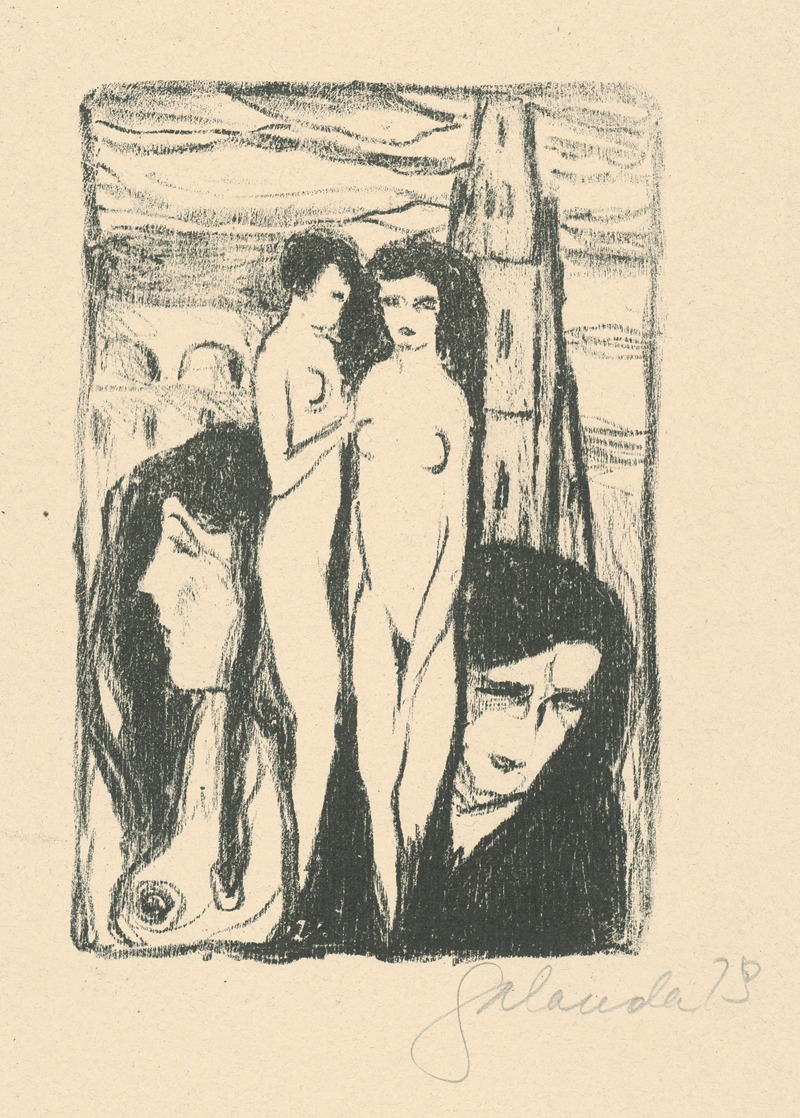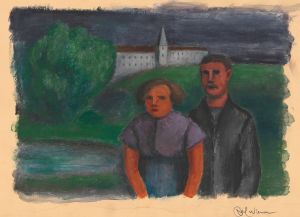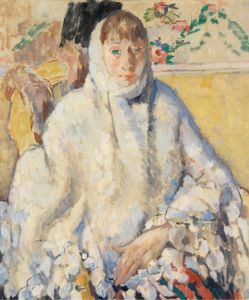
Ženské metamorfózy
A hand-painted replica of Mikuláš Galanda’s masterpiece Ženské metamorfózy, meticulously crafted by professional artists to capture the true essence of the original. Each piece is created with museum-quality canvas and rare mineral pigments, carefully painted by experienced artists with delicate brushstrokes and rich, layered colors to perfectly recreate the texture of the original artwork. Unlike machine-printed reproductions, this hand-painted version brings the painting to life, infused with the artist’s emotions and skill in every stroke. Whether for personal collection or home decoration, it instantly elevates the artistic atmosphere of any space.
Mikuláš Galanda was a prominent Slovak painter and graphic artist, known for his significant contributions to modern Slovak art in the early 20th century. One of his notable works is "Ženské metamorfózy" (translated as "Female Metamorphoses"), which reflects his unique artistic style and thematic focus.
Galanda was born on May 4, 1895, in Turčianske Teplice, Slovakia. He studied at the Academy of Fine Arts in Budapest and later in Prague, where he was influenced by various modernist movements. His work is characterized by a synthesis of traditional Slovak themes with modernist techniques, which was part of a broader effort to develop a national art style that resonated with Slovak identity and culture.
"Ženské metamorfózy" is a testament to Galanda's exploration of the female form and its transformation. The painting is part of his broader oeuvre that often depicted women, a subject through which he explored themes of identity, transformation, and the human condition. His portrayal of women was not merely representational but often symbolic, reflecting broader existential themes.
Galanda's style in "Ženské metamorfózy" can be described as a blend of expressionism and cubism, with a distinct emphasis on form and color. His use of bold lines and geometric shapes is indicative of his cubist influences, while the emotional intensity of his subjects aligns with expressionist tendencies. This combination allowed Galanda to convey complex emotions and ideas through a modernist lens.
The painting reflects Galanda's interest in the metamorphosis of the female form, possibly symbolizing broader themes of change and transformation. This thematic focus is consistent with his other works, where he often explored the intersection of tradition and modernity, as well as the evolving nature of Slovak society.
Galanda was a member of the "Generation of 1909," a group of Slovak artists who sought to break away from academic art traditions and embrace modernist approaches. This group played a crucial role in the development of Slovak modern art, and Galanda's work, including "Ženské metamorfózy," was instrumental in this cultural shift.
Throughout his career, Galanda faced challenges, including political and social upheavals in Slovakia. Despite these difficulties, he remained committed to his artistic vision and continued to produce works that were both innovative and reflective of his cultural heritage.
"Ženské metamorfózy" is an important piece within Galanda's body of work, illustrating his ability to merge personal expression with broader cultural themes. It stands as a significant example of Slovak modernist art and continues to be studied and appreciated for its artistic and cultural contributions.
Mikuláš Galanda passed away on June 5, 1938, but his legacy endures through his influential works and his impact on Slovak art. "Ženské metamorfózy" remains a testament to his artistic vision and his role in shaping modern Slovak art.


















